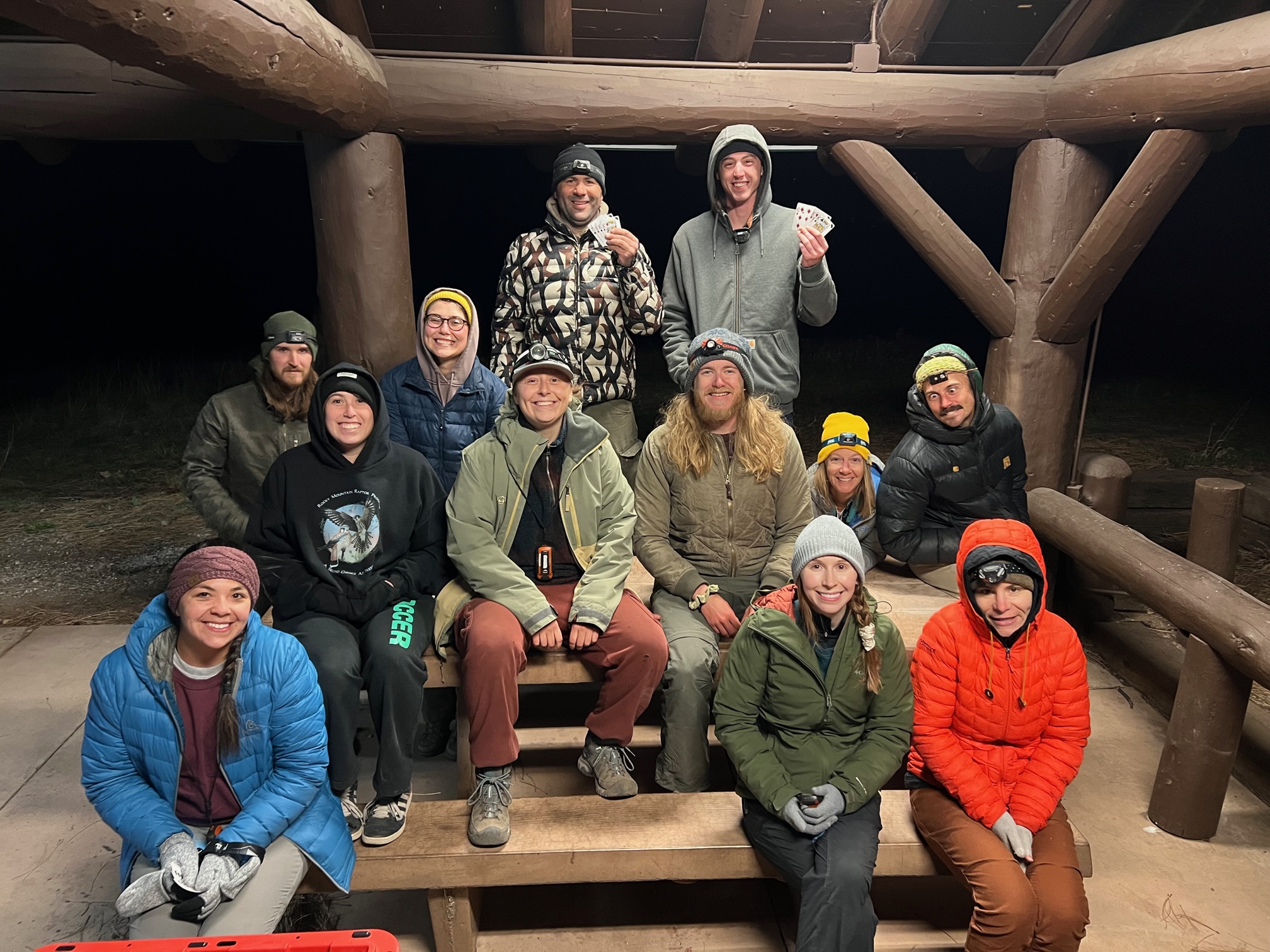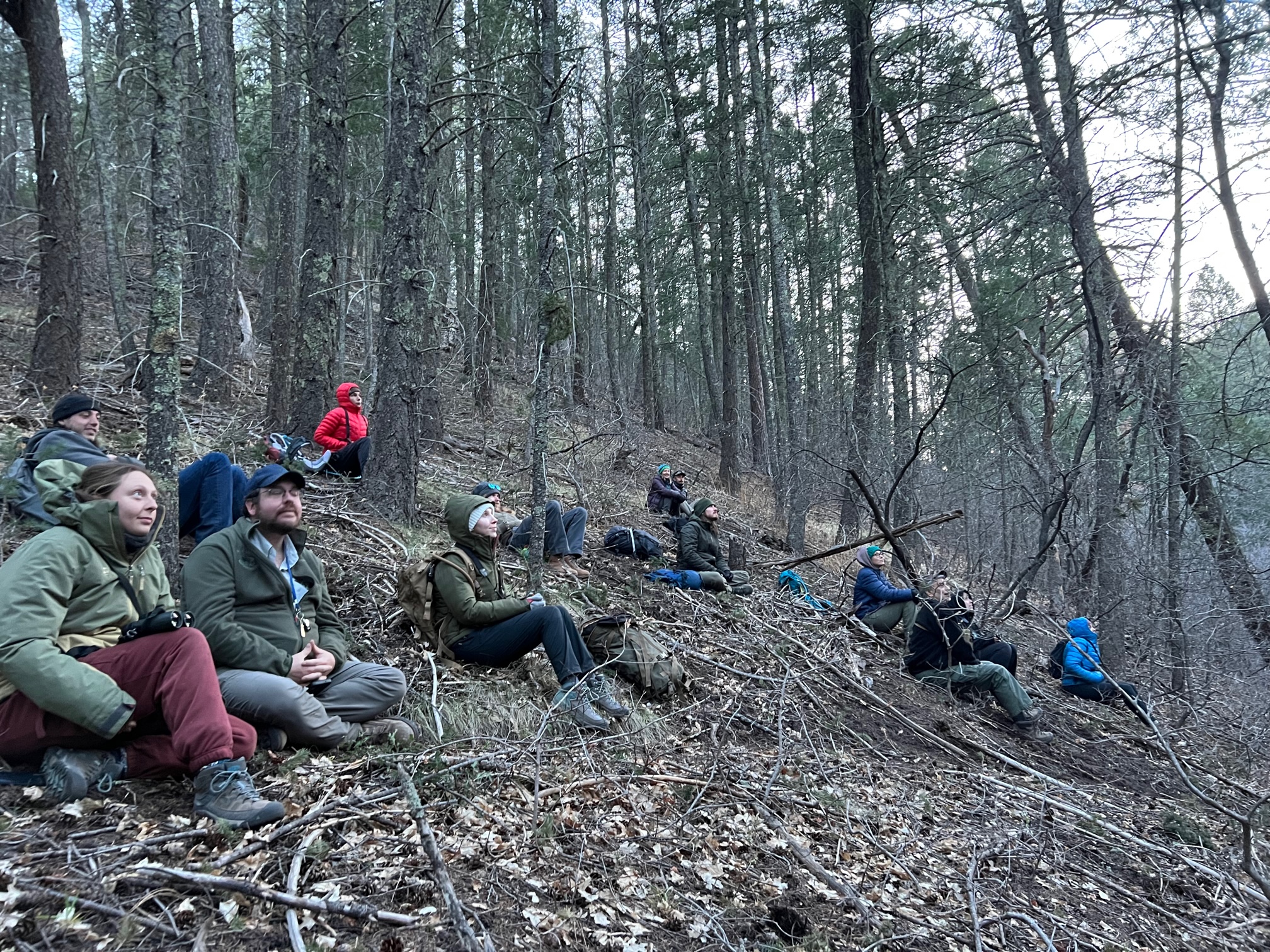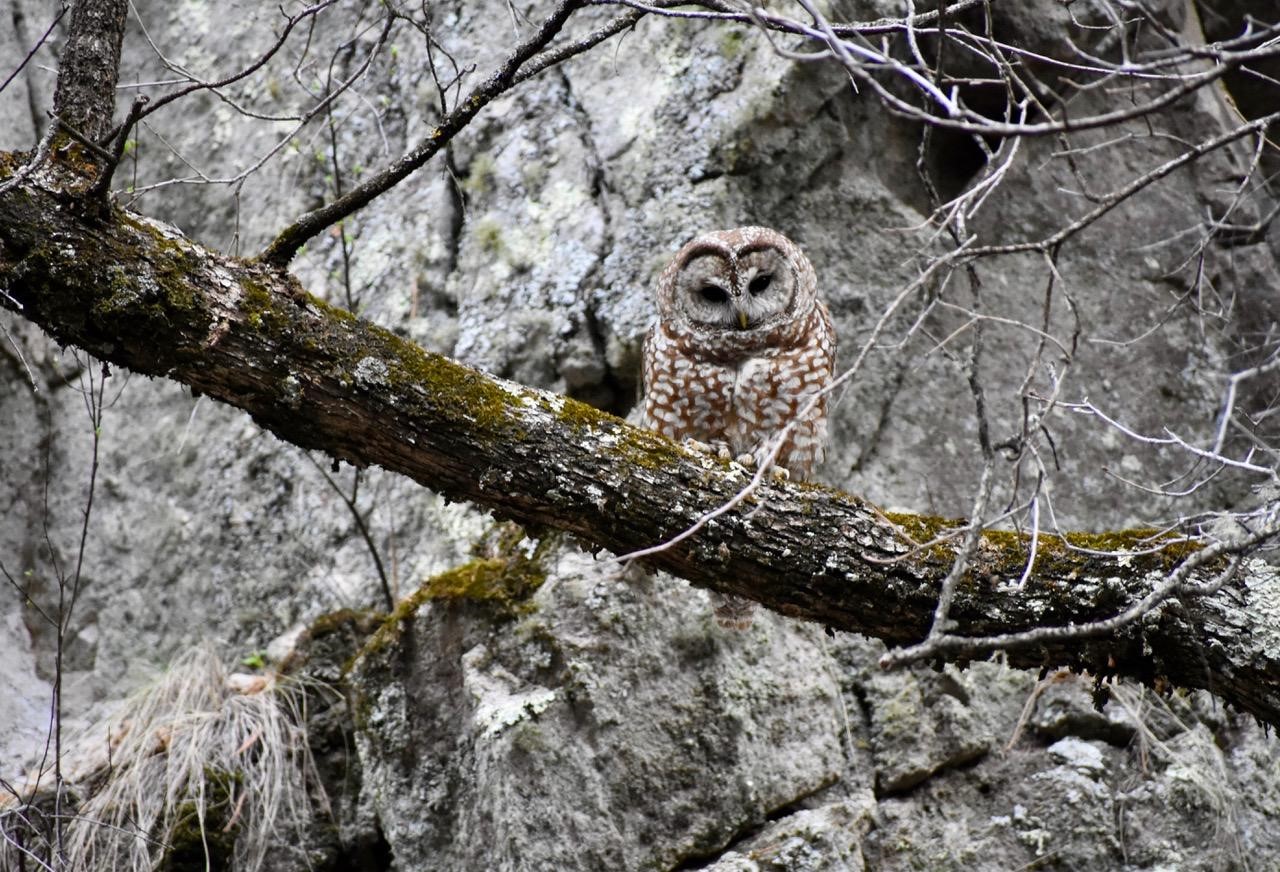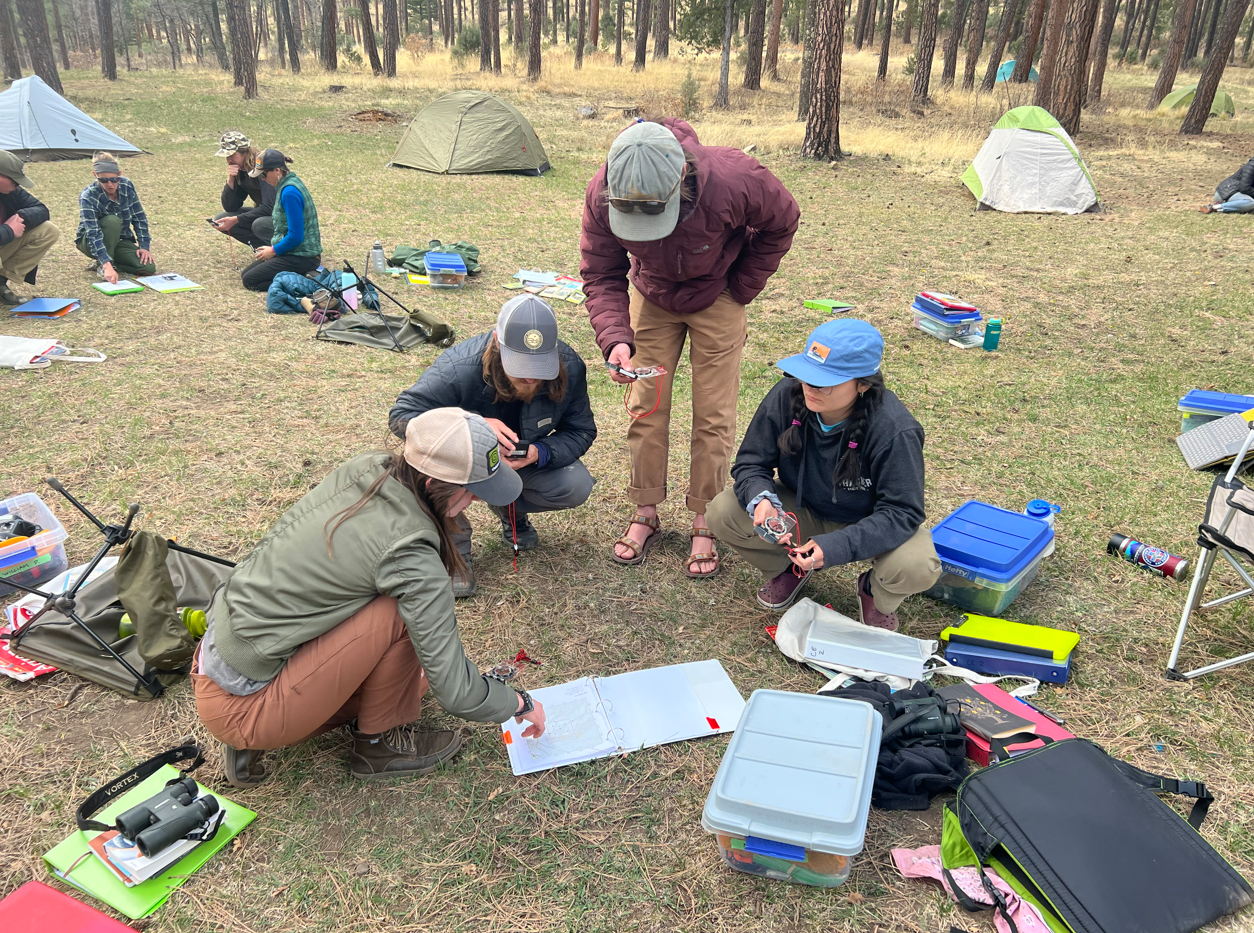Hi, my name is B and I am an intern at the Bird Conservancy of the Rockies where I primarily work on the Mexican Spotted Owl Project (MSO). I came to Bird Conservancy after finishing my undergraduate degree without having had much field experience at all. I completed my undergraduate thesis on fish, which was in no way where I wanted to focus my attention. However, my passion has always been with birds which is why I was over the moon when I found out that I had gotten the position.
The first day I came to Bird Conservancy we went around the Fort Collins office and I was introduced to all of the staff. It struck me just how kind everyone was, and of course still are. We spent the rest of the day preparing for the field season, something that I now have a great respect for given how long it took to get everything ready. It gave me a chance to look into another aspect of research, one of which will be necessary for me in my future.
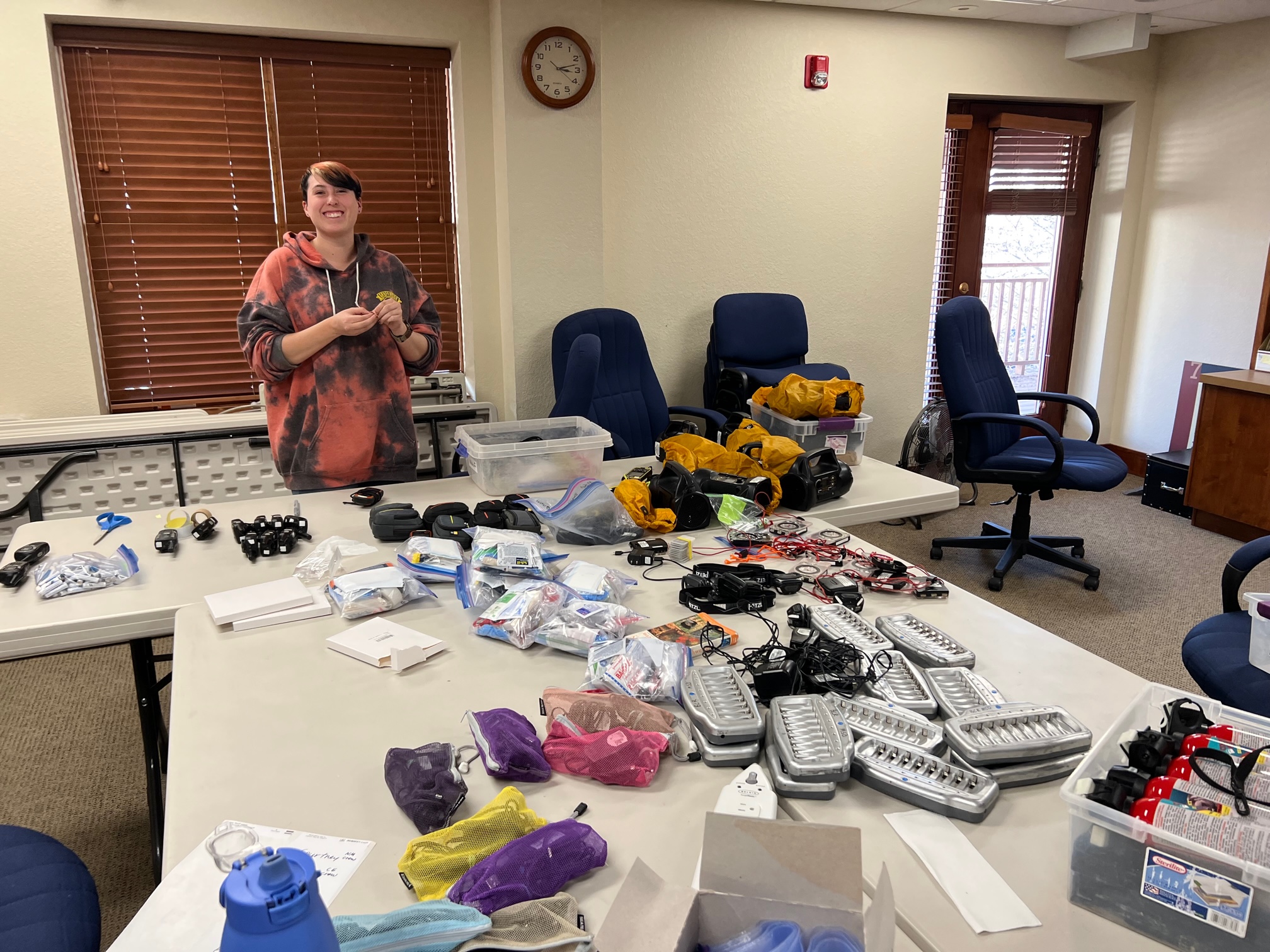
B helping the crew prepare for the field season
I helped out in the office preparing for the season for around a month before it was time to head out into the field for training. I remember being very nervous before heading into the field for the first time. I did not know what to expect. There were a lot of new people that I was about to meet, and I hoped that I would make a good first impression. There was no need for the amount of worry I placed into the matter because as soon as I got to talking with everyone all those nerves disappeared. The training period was not only necessary for getting us up to par with the protocol and safety measures, but also to connect with the people we may be seeing consistently for the next few months.
- The MSO field crew during training
- The crew looking at a roosting Mexican Spotted Owl during training
On the last day of the training we all departed for our assigned teams. I headed with three other technicians to Arizona for a small break period before the season started. During this time I was able to go and explore on my own. It was Easter day and I went for a hike up Sabino Canyon outside of Tucson. It was one of the most beautiful places I have ever been, and chances are I would not have had the opportunity to see it if it were not for being with the Bird Conservancy. That is one of the best parts of this internship; getting the opportunity to explore the Southwest.
After exploring the Southwest it was time to start the research. We did a few surveys as a four person team before being separated into pairs. The long nights and difficult hikes brought us closer together and I learned a lot about who the other members were, what their backgrounds were, their distinct personalities, and why they chose to work for the Bird Conservancy. It made those long hikes a lot more enjoyable. It felt as though you were hiking with long lost friends.
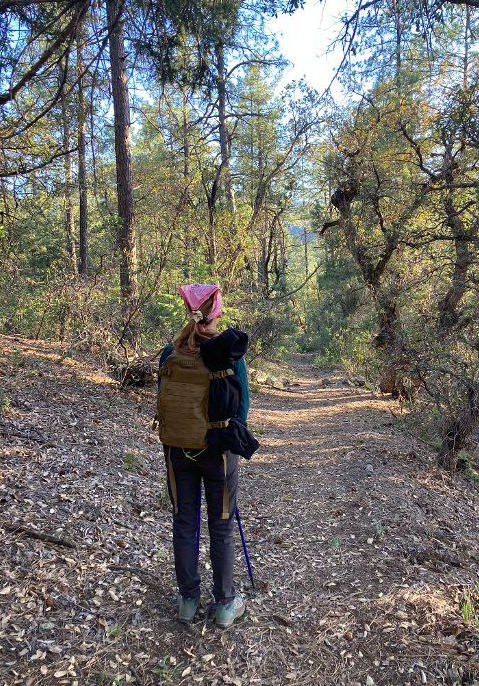
Most of the research sites are very remote and require backpacking to get to.
Then we were off on our own to cover more ground. There were definitely some nerves going into our first partnered survey. We decided we wanted to give ourselves some extra time so we left the camp early, only to have to go back two different times for stuff that we had forgotten. The site itself also proved difficult for us in that we kept getting turned around, even while following the GPS. Though it took us most of the first site to get a system down, we eventually got one solidified that we would follow for the rest of the hitch, making each of the surveys run far smoother than this first one.
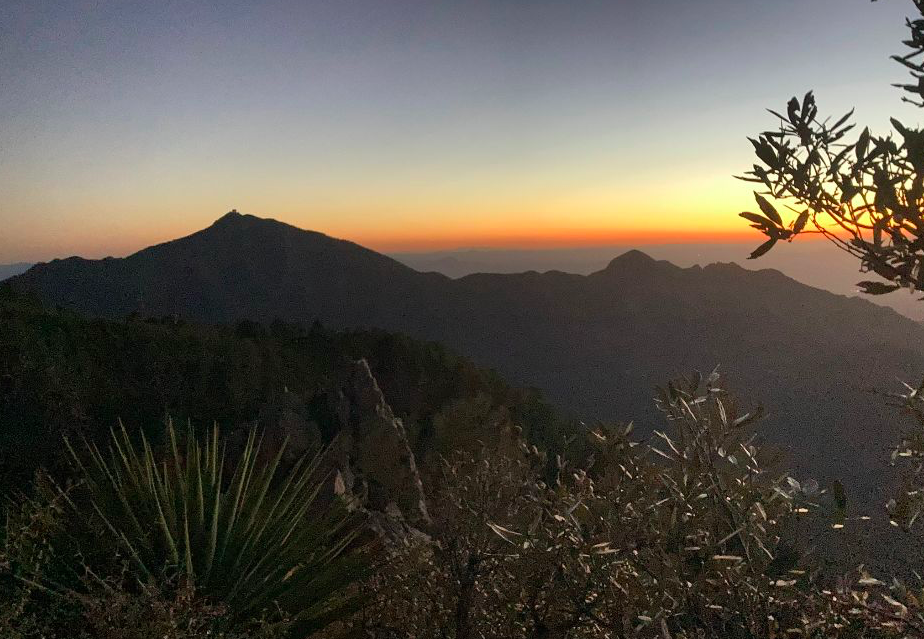
A perk of working in such remote areas are the beautiful sunsets you get to witness.
I still remember my favorite site that we did together. It was in the Coronado National Forest and we were both fairly tired from a long hike that we had done a few nights before. This was also to be a long hike. We left camp at 3:30 p.m. and did not make it back until around midnight. Luckily, we could take the trail the whole way to our first point, which was much preferred to the dreaded bushwhacking. We passed the time doing icebreakers which would lead into bigger conservations, or just gossiping about our home lives, which would be a common theme for the rest of the sites that we surveyed.
We skirted along the edge of the mountain to get to the other side using a run down, barely visible, trail which was only really apparent using CalTopo or the GPS. By the time we rounded the edge the sun was going down. We kept periodically stopping during this final march to the point in order to take photos of the now setting sun. We got to the point about five minutes before we could begin calling, so we made ourselves comfortable by bundling up in some clothes, pulling out some snacks, and taking big gulps of water. It was a memory to remember, but it does not end with our summit.
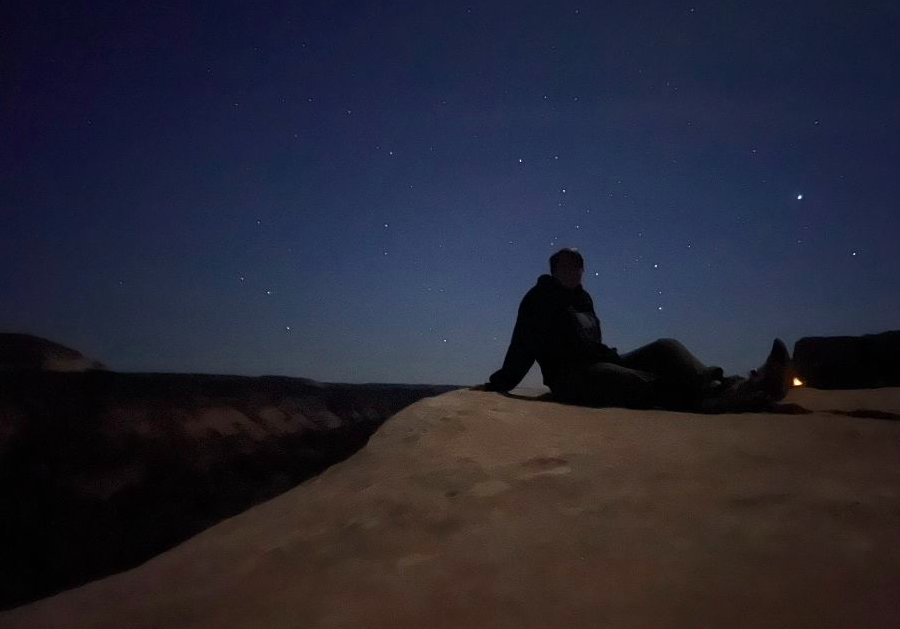
Enjoying the night sky during a break between surveys
We were almost down to our camp when I noticed two beautifully round orbs staring at us from behind a bush. We both froze in our places while we racked our brains on what to do. It did not take long to draw from what we had learned in our training, so we pulled out our bear spray and started making noise, being careful to look behind us after we passed to make sure the creature was not following us. This would be one of the two mountain lions and two bears that we would see in our time in the field.
- Mexican Spotted Owl. Photo by Morgan Calla
- Technicians on the Mexican Spotted Owl project attend a 5-day training to refine their navigation and backcountry skills.
There is really no way to describe how one feels when out in the wilderness at night. There is a level of fear that comes from the nakedness you feel when there is no sun to help you see, but there is also some majesty in being out there when all is still. I have had the opportunity to travel around the nation camping and hiking, but the experience of a survey is nothing like anything I had experienced before.
I have been especially lucky when it comes to experiences because as an intern I have been given the opportunity to go and see the other projects the Bird Conservancy is working on. I went to a training for the IMBCR team where I learned about bird point count surveys. I also had the chance to go on a few bird banding excursions, and have learned about the stewardship program at Bird Conservancy. In all actuality, there is no way to describe the things that I have experienced on paper, but I can say with confidence that being with the Bird Conservancy has been one of the best experiences of my life.
B was an Intern for our Mexican Spotted Owl program for the 2023 field season. Internships like this are a great way to get experience as a field technician. Keep an eye out on our Internship page to see future opportunities!


